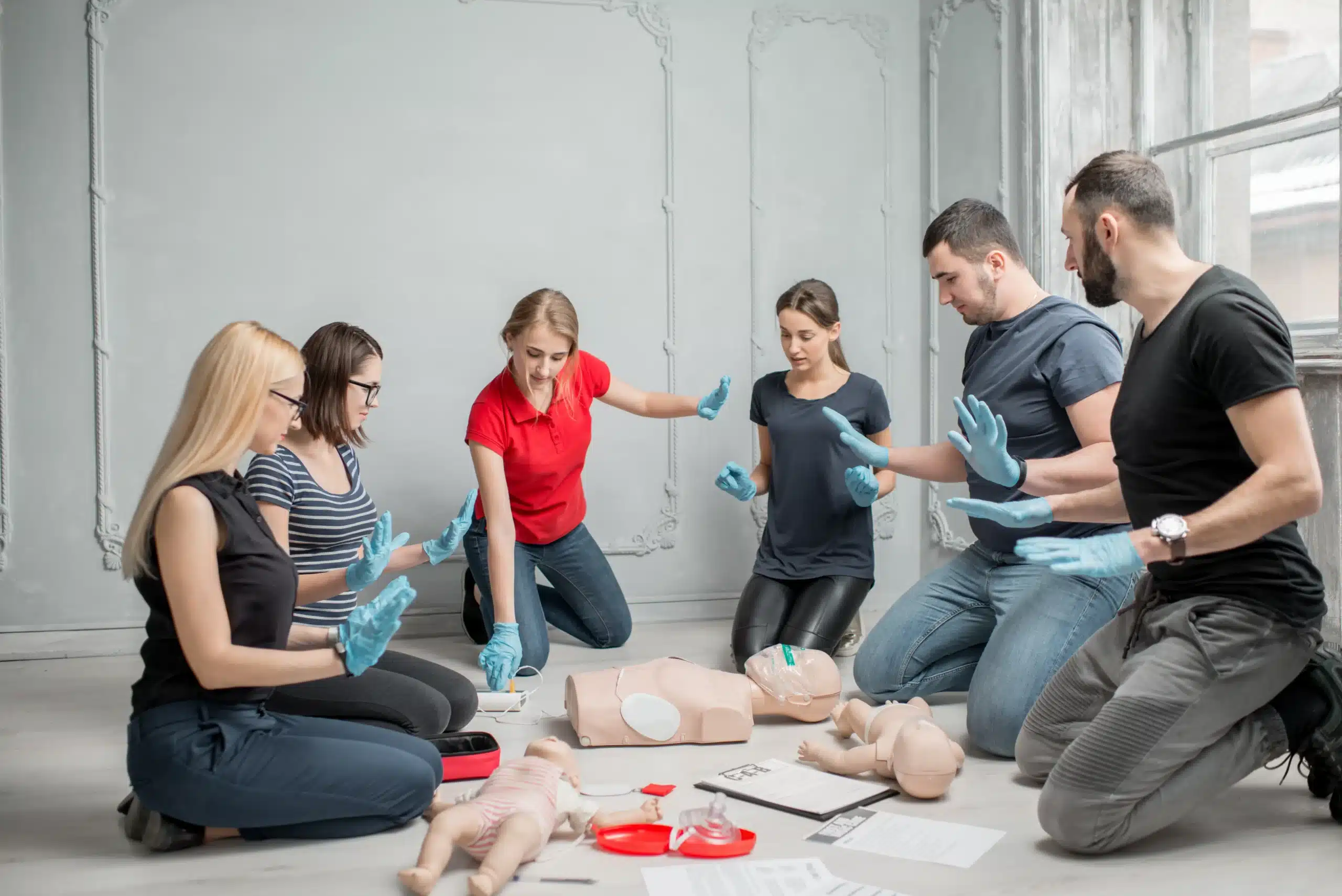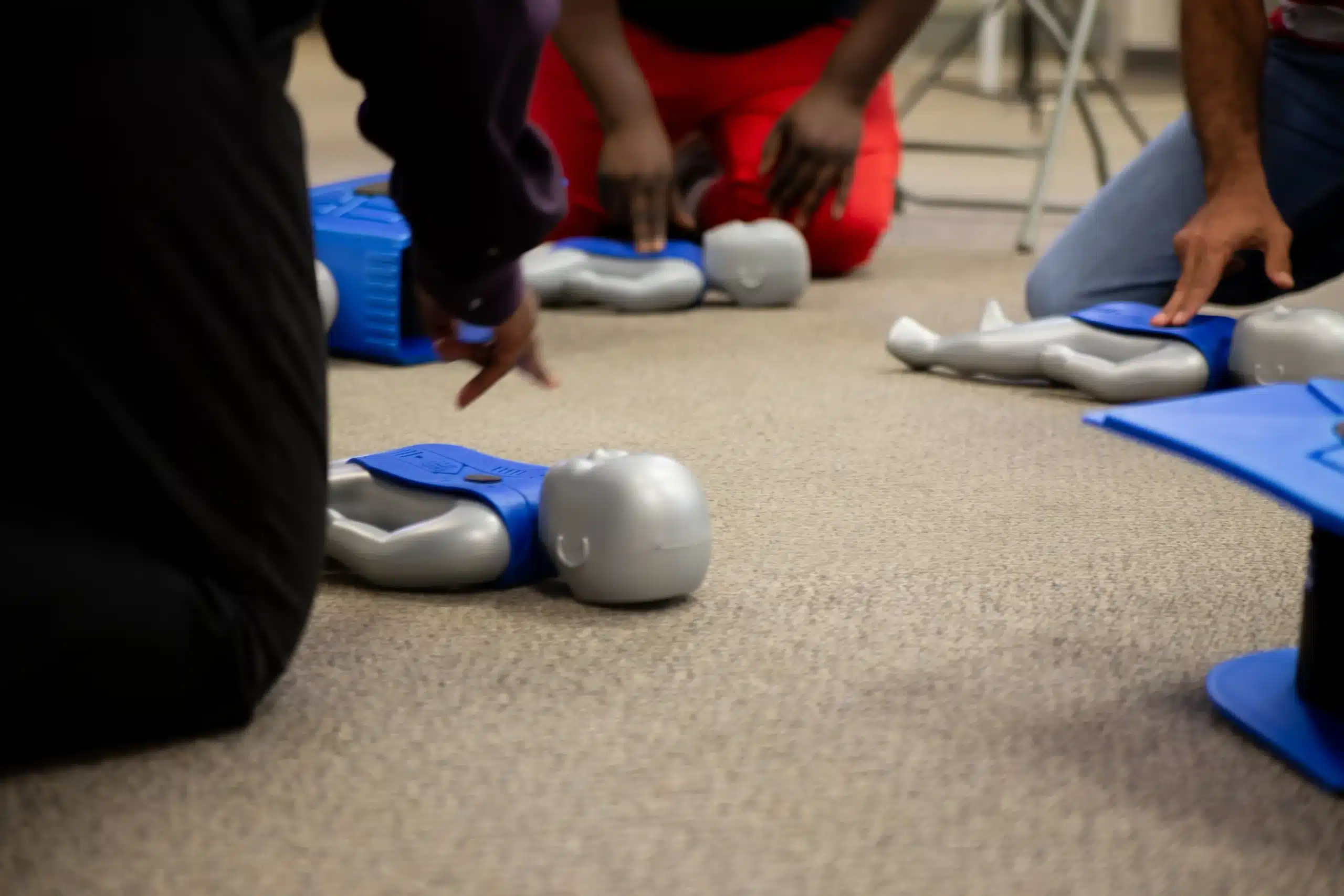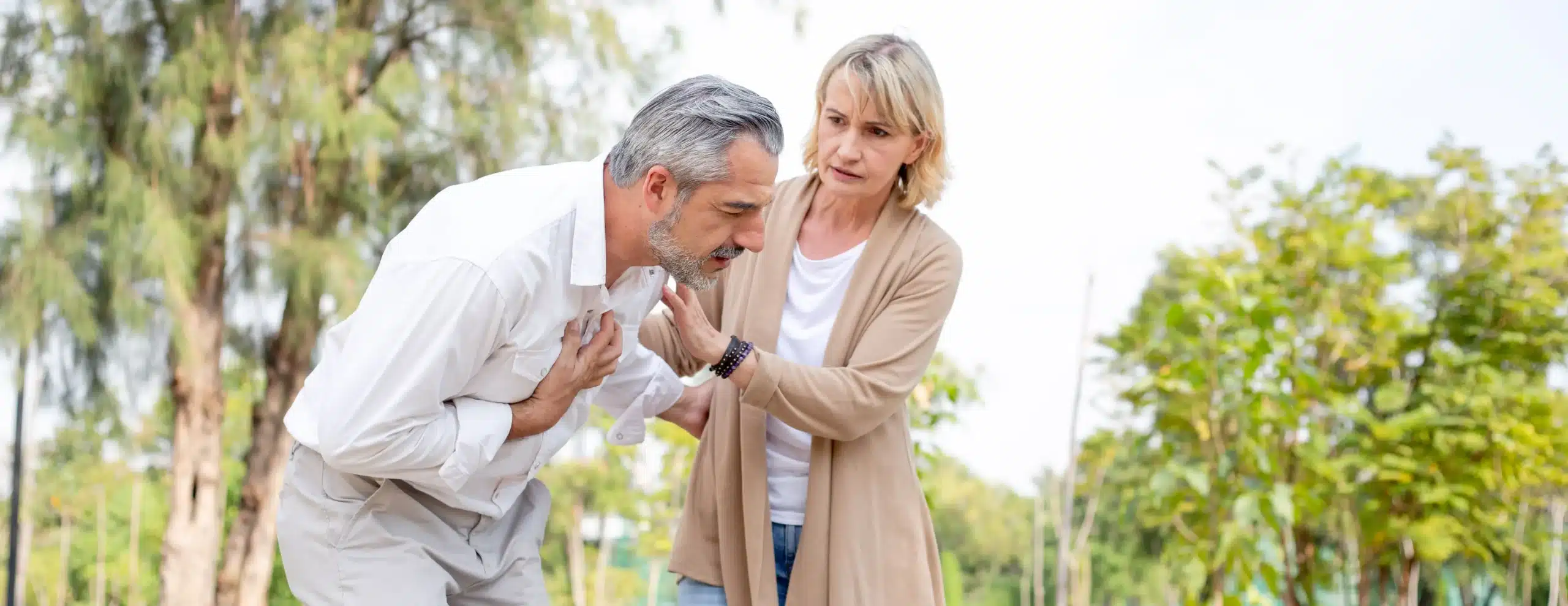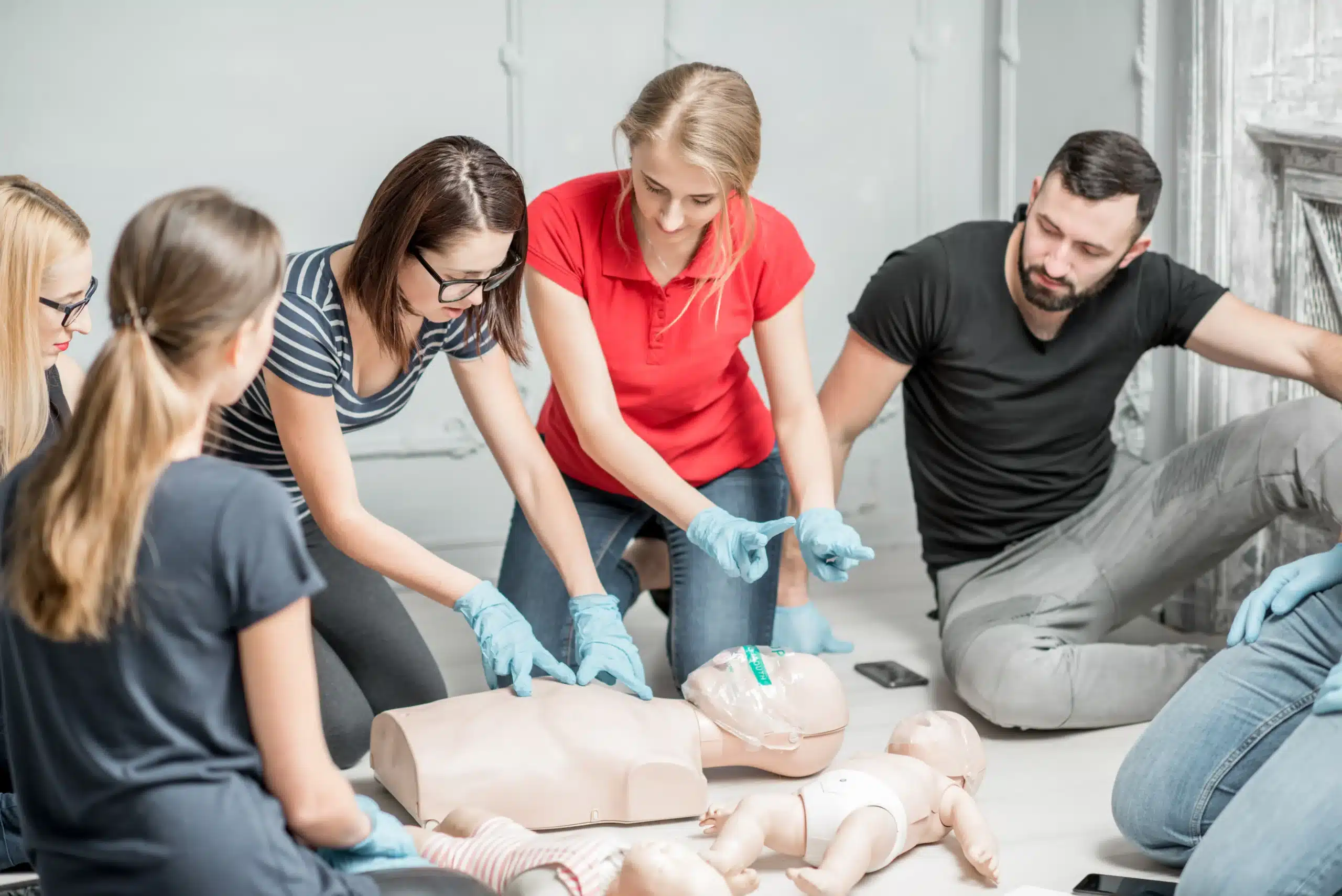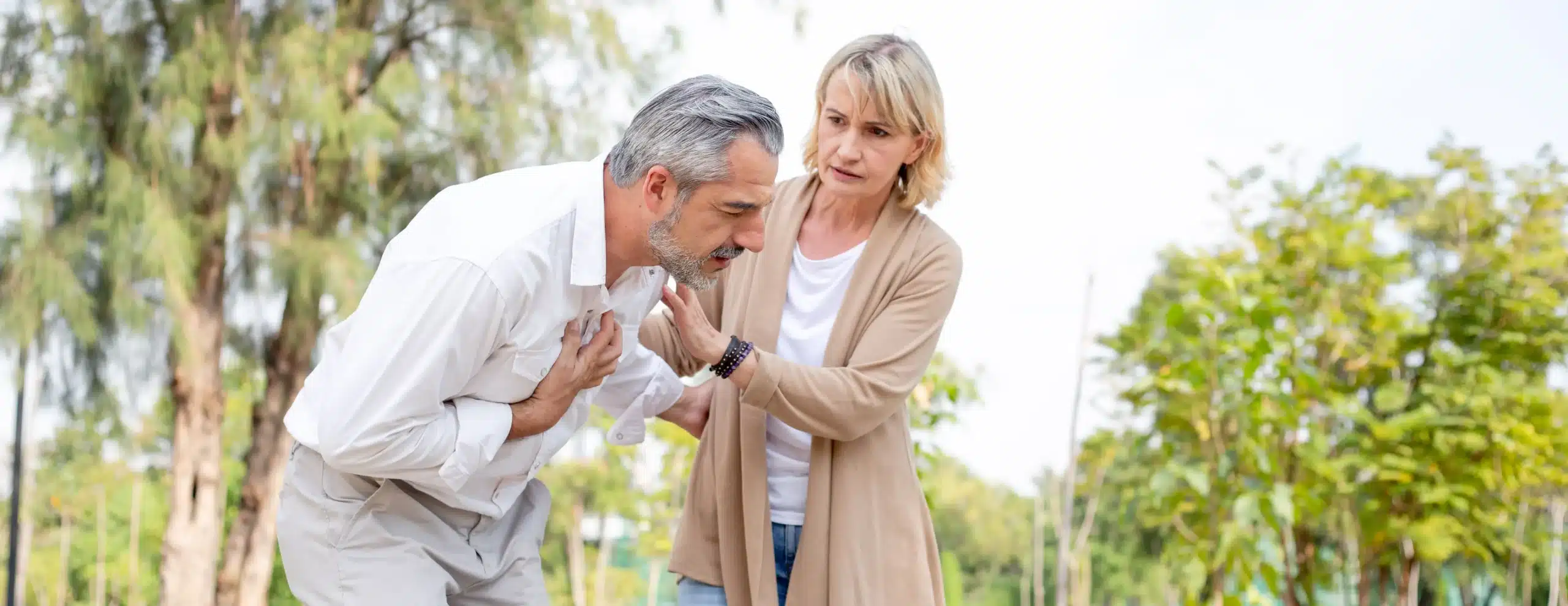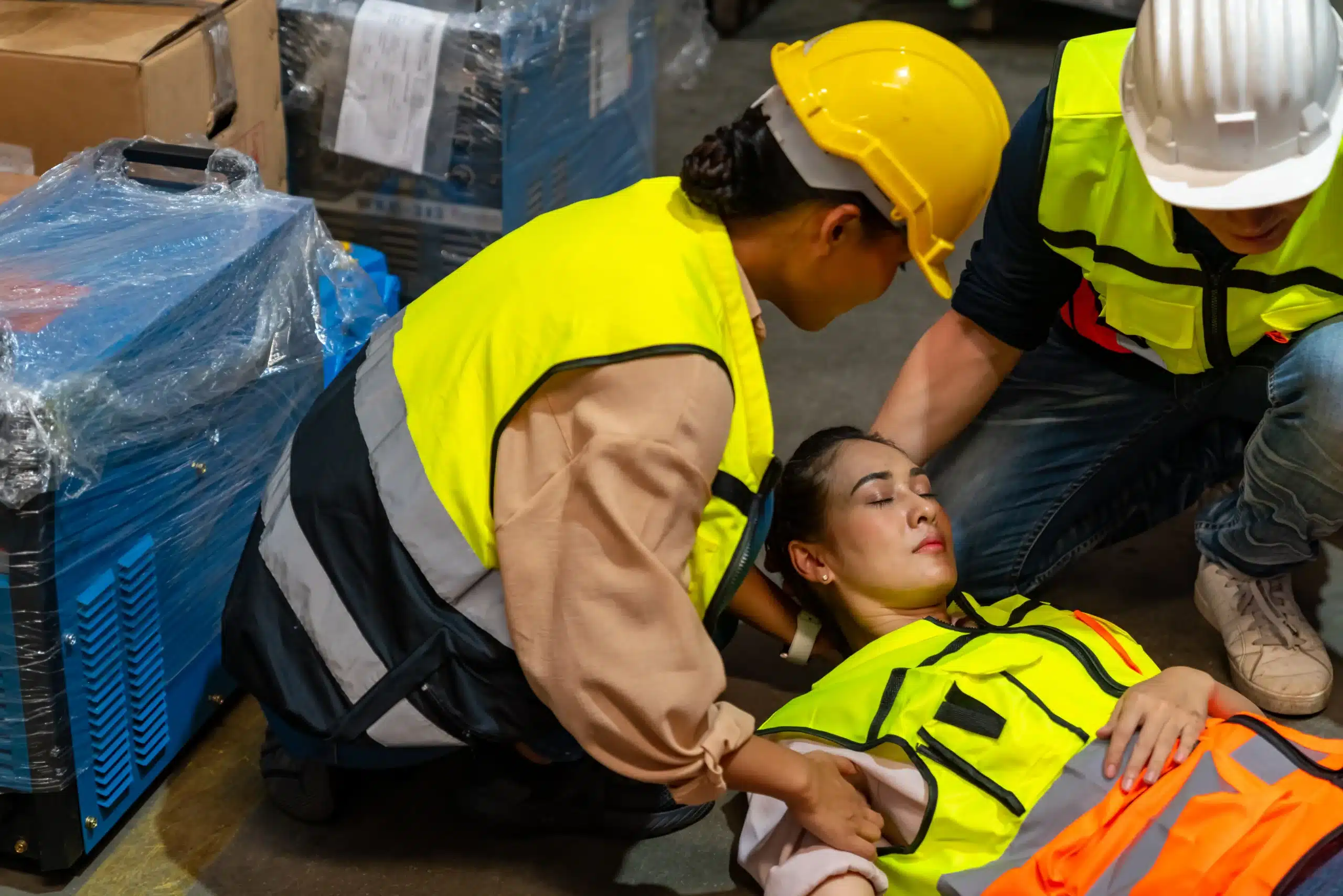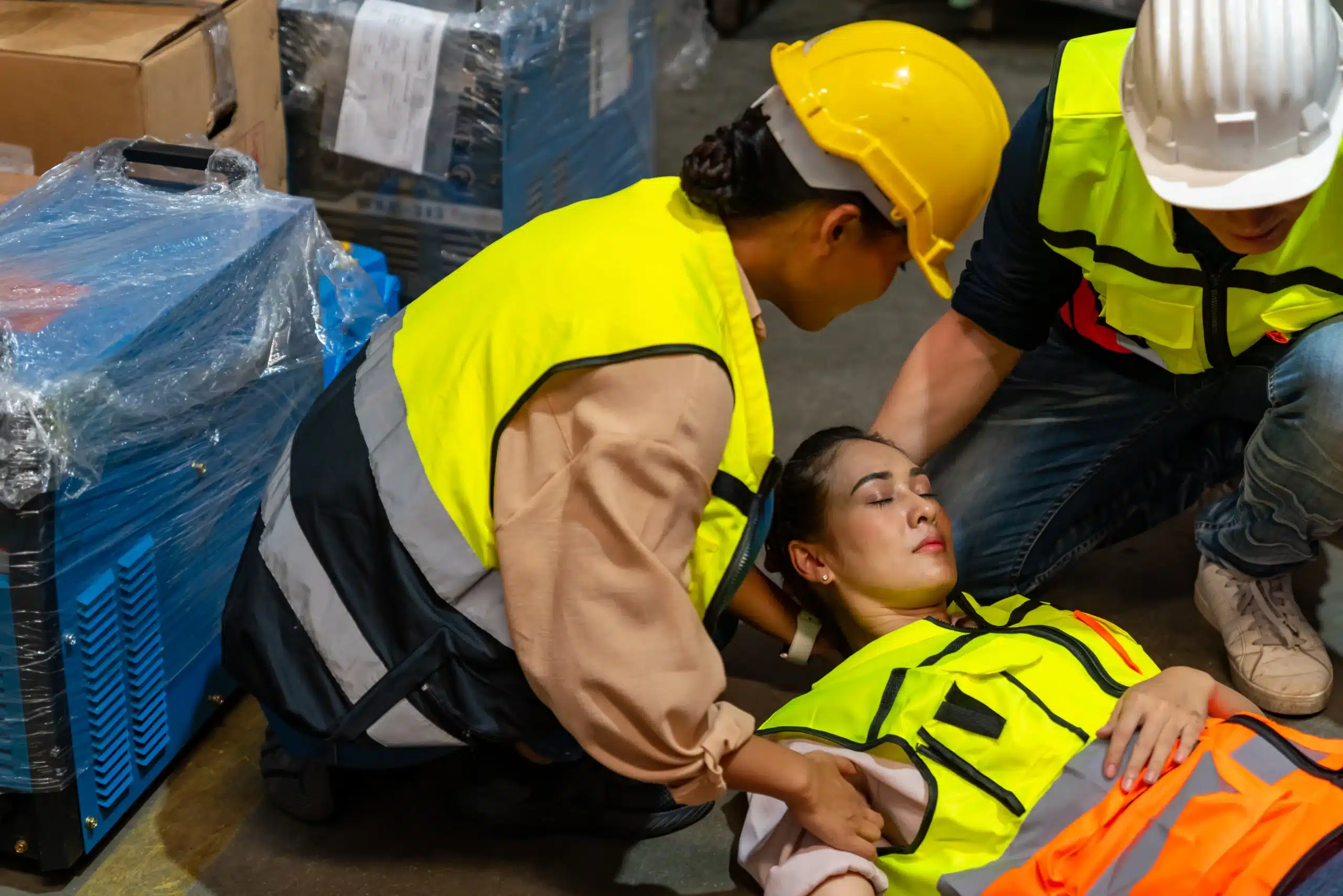Empower yourself with the skills to make a difference. Hands-on CPR training in Berkeley provides you with the knowledge and confidence to act quickly and effectively during medical emergencies. This article serves as your comprehensive guide to CPR training in Berkeley, covering everything from basic life support to advanced certifications. We’ll explore the different types of CPR courses available, discuss the importance of hands-on practice, and provide resources for finding the right training program in your area. Whether you’re a healthcare professional, a parent, or simply someone who wants to be prepared, this guide will help you find the perfect CPR training in Berkeley to meet your needs.
Key Takeaways
- Find the right CPR class for you: Whether you’re a parent, teacher, or healthcare professional, CPR training empowers you to respond effectively to emergencies. Explore options from basic to advanced life support to match your specific needs.
- CPR courses combine knowledge and practice: Expect a mix of classroom instruction, hands-on skills practice, and assessment to ensure you’re prepared for real-world scenarios. Look for courses that offer feedback devices and simulations for enhanced learning.
- Stay current with your CPR skills: Regularly refresh your knowledge and techniques to maintain proficiency. Consider refresher courses, online resources, or RQI programs to stay up-to-date with the latest guidelines and best practices.
What is Hands-On CPR Training?
Hands-on CPR training gives you the skills to respond effectively during cardiac emergencies. It focuses on teaching the techniques of cardiopulmonary resuscitation (CPR) through practical experience. The American Red Cross highlights the value of Hands-Only CPR (chest compressions only) as an easy-to-learn yet crucial skill for bystanders before professional help arrives. This immediate action can significantly improve someone’s chances of survival during cardiac arrest.
In a typical hands-on CPR class, you’ll learn how to perform continuous chest compressions at the correct rate (100-120 per minute), with the proper depth (at least 2 inches), and allowing the chest to fully recoil after each compression. This technique is essential for maintaining blood flow to the heart and brain. Many organizations in Berkeley offer hands-on CPR training, including American Heart Association (AHA) certified courses. These courses often cover adult, child, and infant CPR, along with training on using an Automated External Defibrillator (AED). Taking a CPR course not only prepares you for emergencies but also builds your confidence in handling these situations, making our community safer for everyone.
CPR Course Options
Finding the right CPR class means understanding the different levels of training available. Whether you’re a parent, a teacher, or a healthcare professional, there’s a course designed to meet your specific needs. Here in Berkeley, you can find everything from basic CPR to advanced life support certifications. Let’s break down the options:
Adult CPR
Adult CPR courses equip you with the skills to respond to cardiac emergencies in adults. You’ll learn how to recognize the signs of a heart attack, perform chest compressions, and provide rescue breaths. Many courses also include training on how to use an automated external defibrillator (AED). These devices are becoming increasingly common in public spaces, and knowing how to use one can significantly increase the chances of survival for someone experiencing sudden cardiac arrest. Some courses, like those offered at Berkeley RecWell, even combine adult CPR with first aid and AED training, giving you a well-rounded skill set to handle various emergencies. Berkeley CPR Classes offers a variety of CPR courses including adult CPR.
Child & Infant CPR
Child and infant CPR courses focus on the specific techniques required to respond to emergencies involving young children and infants. Because their bodies are smaller and more delicate, the methods used for CPR are different than those used for adults. These courses teach you how to perform CPR on infants and children, how to relieve choking, and what to do if a child is unresponsive. As a parent, caregiver, or anyone who works with children, having this training can provide invaluable peace of mind. For local resources, check out our guide to CPR training in Berkeley.
Basic Life Support (BLS)
Basic Life Support (BLS) certification is a crucial credential for healthcare providers and anyone in a medical field. BLS courses cover core life-saving skills, including high-quality CPR for adults, children, and infants, along with how to use a bag-mask device and other critical techniques. This training emphasizes teamwork and effective communication during emergencies. BLS certification is often a prerequisite for other advanced certifications, like ACLS, and demonstrates a commitment to providing high-quality patient care. Berkeley CPR Classes offers BLS certification courses. You can learn more about the distinctions between BLS and ACLS certifications from resources like MyCPRCertificationOnline.
Advanced Cardiovascular Life Support (ACLS)
Advanced Cardiovascular Life Support (ACLS) is a comprehensive advanced course designed for healthcare professionals who manage complex cardiovascular emergencies. This training goes beyond basic CPR and covers topics like airway management, pharmacology, and electrocardiogram (ECG) interpretation. ACLS certification is essential for doctors, nurses, paramedics, and other healthcare providers who work in critical care settings. Berkeley CPR Classes offers ACLS certification courses. Resources like Cascade Training offer further insights into the differences between ACLS and BLS. Choosing the right course depends on your current role and career goals within the healthcare field.
What Happens in a CPR Class?
CPR classes blend theory and practice to give you the skills and confidence to act in an emergency. Here’s a glimpse of what you can expect:
Classroom Instruction
The classroom portion covers essential concepts like recognizing the signs of a cardiac arrest, understanding how CPR works, and the steps of the Chain of Survival. You’ll learn about different CPR techniques for adults, children, and infants, as well as how to use an automated external defibrillator (AED). This part of the class often involves presentations, videos, and discussions, creating an engaging learning environment. As Berkeley CPR Classes notes, there’s a CPR course in Berkeley designed for everyone, from basic life support to advanced certifications.
Skills Practice
After the classroom instruction, you’ll move on to hands-on practice. This is where you’ll apply what you’ve learned using mannequins and AED training devices. Instructors will guide you through chest compressions, rescue breaths, and AED use, providing feedback and corrections to ensure you’re performing the techniques correctly. UC Berkeley’s Recreation and Wellbeing highlights the integration of practical scenarios into their CPR classes, giving you a taste of real-world application. You’ll practice different scenarios to build muscle memory and confidence.
Assessment & Certification
Once you’ve demonstrated competency in the skills practice, you’ll typically undergo an assessment to evaluate your understanding and technique. This may involve a written exam and a practical skills test. Upon successful completion, you’ll receive an official American Heart Association certification card, valid for two years. This certification signifies your readiness to respond to emergencies and provide crucial care until professional help arrives.
Where to Find CPR Training in Berkeley
Finding the right CPR training in Berkeley depends on your needs and preferences. Here’s a rundown of reputable providers to help you get started:
Berkeley CPR Classes
Berkeley CPR Classes offers a comprehensive range of American Heart Association (AHA) certified courses. They cover everything from basic CPR and first aid to advanced certifications like BLS, ACLS, and PALS. Berkeley CPR Classes is committed to customer service and offers a low-price guarantee, making quality training accessible. They also offer discounts for group classes and specialized training like RQI. Learn more about their low price guarantee. For those interested in BLS certification, check out their BLS course. If you’re looking for ACLS certification, explore their ACLS course options. Groups can find information on discounted rates for CPR training. Finally, for those needing RQI training, visit their RQI classes page.
American Red Cross
The American Red Cross is a well-known provider of CPR and first aid training. Their Berkeley location offers various courses, including adult, child, and infant CPR, as well as first aid and AED training. You can find their CPR class schedule on their website.
Alameda County EMS
Alameda County EMS provides CPR and first aid training for individuals and groups. They focus on giving community members the skills to respond effectively to emergencies. Find their course information and schedules on the Bay Area CPR website.
UC Berkeley University Health Services
If you’re affiliated with UC Berkeley, University Health Services sometimes offers CPR and other health and safety training through their Recreation and Wellbeing department. Visit the Recreation & Wellbeing website for current courses.
Costs, Certification, & Renewal
CPR certification costs in the Bay Area, much like anywhere else, depend on a few things: the type of course (adult-only, child/infant, or all-inclusive), whether you choose an online, in-person, or blended format, and the certification level you need. Understanding these factors will help you find a course that fits your budget and learning style.
Typical Prices
In Oakland, for example, prices can vary. Basic adult CPR/AED courses through the Red Cross can start around $37 for online-only options, $55 for in-person classes, and around $105 for blended learning that combines online modules with in-person skills sessions. Keep in mind that these are just examples, and prices can differ between providers and locations. It’s always a good idea to check with specific training centers like Berkeley CPR Classes for their current pricing.
Group Discounts & Deals
If you’re looking for ways to save on CPR training, or you need to certify a group, definitely explore group discounts. Berkeley CPR Classes offers options for group training, which can be a cost-effective way to get certified with friends, coworkers, or community members. They also have a low-price guarantee, so you can feel confident you’re getting a good deal.
Getting Certified
Most CPR courses, including those offered by Berkeley CPR Classes, result in an official American Heart Association (AHA) certification card. This nationally recognized certification is typically valid for two years. As an AHA Training Center, Berkeley CPR Classes ensures you’ll receive high-quality instruction and a certification that prepares you to respond effectively in emergencies. Their courses cover essential life-saving techniques and provide the knowledge and skills you need to assist individuals experiencing cardiac arrest or other medical crises.
Keeping Your Certification Current
While your AHA CPR certification is good for two years, refreshing your skills more frequently is a smart move. The Red Cross Scientific Advisory Council points out that skills can start to fade even within months of initial training. Consider taking a refresher course or exploring RQI classes to keep your skills sharp and your confidence high. This ensures you’re always prepared to provide assistance when needed. Staying up-to-date with the latest guidelines is crucial for effective CPR.
Find the Right CPR Course
Finding the perfect CPR course can feel a little overwhelming with so many options. But don’t worry, it’s easier than you think once you break it down. Here’s a simple guide to help you choose the right CPR class in Berkeley:
Assess Your Needs
First, think about why you’re taking CPR training. Are you a parent wanting to be prepared for emergencies at home? A healthcare professional needing certification for your job? Or maybe you’re a teacher or coach looking to add this important skill to your toolkit. CPR training is for everyone, so find a course in Berkeley that fits your specific needs. Basic CPR and first-aid training are great for everyday emergencies, while healthcare providers often require more advanced certifications like ACLS. Consider your current skills and what you hope to achieve with your training.
Compare Courses
Once you have a general idea of what you need, start comparing different courses. Berkeley offers a variety of options, from basic community training to advanced professional certifications. Look at what each course covers. For example, Berkeley CPR Classes offers a range of American Heart Association (AHA)-certified courses, including BLS (Basic Life Support), ACLS (Advanced Cardiovascular Life Support), and PALS (Pediatric Advanced Life Support). See which course content aligns best with your goals. Also, consider the class schedule and location—find something that fits conveniently into your life. Group discounts may be available if you’re learning with friends or colleagues.
Check Instructor Qualifications
Finally, do a little research on the instructors and organizations offering the training. Look for providers offering American Heart Association (AHA) certified courses, as the AHA is a highly respected authority in CPR training. Knowing your instructors are experienced and certified will give you confidence in the quality of your training. You can usually find this information on the organization’s website or by giving them a quick call. Berkeley CPR Classes’ low price guarantee ensures you’re getting quality training at a competitive price. Choosing the right CPR course is an important decision, so take your time, do your research, and find the perfect fit for you.
Prepare for Your CPR Class
Getting ready for your CPR class doesn’t require a ton of prep, but a little planning can make your experience smoother. Knowing what to expect and how to prepare beforehand will help you focus on learning these lifesaving skills.
What to Bring
CPR training is hands-on. Wear comfortable clothing that allows for a full range of motion—you’ll be practicing on mannequins and working with a group. Bring a notebook and pen to jot down notes, though most courses provide materials. A water bottle is also a good idea, especially for longer sessions. Beyond that, you don’t need much else. Your focus should be on absorbing the information and practicing the techniques. Remember, CPR training is for everyone: find a CPR course in Berkeley that fits your needs, from basic life support for everyday emergencies to advanced certifications for healthcare professionals. Many hospitals and medical centers in Berkeley offer CPR training and certification courses, often leading to official American Heart Association certification cards, valid for two years.
Pre-Course Prep
Before your class, take some time to familiarize yourself with the course content. A quick online search can offer a preview of basic CPR steps and techniques. This isn’t a substitute for the in-person training, but it can give you a head start. Research different CPR training providers like Berkeley CPR Classes, the American Red Cross, and UC Berkeley Recreation and Wellness, comparing their course offerings, schedules, and student reviews. The availability and accessibility of CPR and first-aid classes in Berkeley highlights the community’s commitment to safety. Confirm the class location and arrival time to avoid any last-minute surprises. Knowing you’re prepared will allow you to relax and get the most out of your training.
CPR Training Technology
CPR training methods are constantly evolving, incorporating new technologies to create a more engaging and effective learning experience. Here are a couple of key advancements:
Feedback Devices
Modern CPR training often uses feedback devices. These tools, often integrated into training mannequins, provide real-time feedback on compression quality and rescue breaths. This immediate feedback helps students refine their technique during practice, improving skill retention and performance in real-life emergencies. For example, some mannequins measure compression depth and rate, giving trainees instant feedback and guidance. This immediate, electronic feedback has proven particularly helpful for first-time trainees. Understanding these feedback mechanisms is crucial for creating more effective training programs and improving patient outcomes.
VR Simulations
Virtual reality (VR) is transforming CPR training. VR simulations create immersive experiences that realistically mimic emergencies, allowing trainees to practice their skills in a safe environment. These simulations can present various scenarios, from a crowded mall to a quiet home, helping trainees adapt to different situations. VR training is particularly helpful for practicing complex scenarios, such as multi-rescuer CPR or unique emergencies. While VR offers a valuable supplemental training tool, hands-on practice with physical mannequins remains essential for developing the muscle memory and tactile skills necessary for effective CPR. If you’re looking for CPR training in Berkeley, our guide can help you find the right course. Many local hospitals and medical centers offer CPR training and certification, including courses from Berkeley CPR Classes leading to American Heart Association certification.
Ongoing CPR Training
Staying current with your CPR skills is key, especially in healthcare. Guidelines and techniques in emergency response can change, so refreshing your knowledge is crucial for providing effective care. The American Heart Association (AHA) offers support and guidance to ensure high-quality CPR training continues.
Beyond initial certification, consider workshops, refresher courses, or online resources to sharpen your skills. Blended learning courses and Resuscitation Quality Improvement (RQI) programs offer flexible options for busy schedules, allowing you to maintain your skills without disrupting your routine. RQI classes often incorporate feedback mechanisms, which are invaluable for improving CPR performance. Getting feedback after practice scenarios helps you refine your technique and boost your confidence. This article further explores the importance of feedback in CPR performance.
To keep your finger on the pulse of advancements in CPR and emergency medical care, subscribe to relevant publications or follow online platforms that offer updates and insights. Staying informed benefits your skillset and contributes to better outcomes in real-world emergencies. This resource offers helpful information on what to do after performing CPR, including next steps and reporting. At Berkeley CPR Classes, we offer a variety of courses to help you stay current with your certifications. Check out our low price guarantee and find a class that fits your needs.
CPR Training FAQs
What types of CPR training are available in Berkeley?
Berkeley offers a range of CPR training to meet different needs, from basic life support for the community to advanced certifications for healthcare professionals. Most courses lead to an official American Heart Association certification card, valid for two years. Berkeley CPR Classes offers CPR, First-Aid, and BLS training, as well as more specialized courses like ACLS and PALS.
Where can I find CPR training classes in Berkeley, Alameda, or Oakland?
Several reputable organizations in the area offer CPR training. Berkeley CPR Classes is a convenient option, and you can also explore courses from the American Red Cross and UC Berkeley Recreation and Wellness. These organizations frequently offer various learning formats, including in-person, online, and blended learning. For group discounts, see our options for discounted group classes.
How long does CPR certification last?
CPR certifications are typically valid for two years. Keep in mind that skills can decline even months after training. Regular practice and refresher courses are essential to maintain your confidence and proficiency. Consider a renewal course before your certification expires.
Are CPR classes accessible to everyone?
Yes, CPR and first-aid classes in Berkeley aim to be accessible to a wide range of individuals. Courses cater to different experience levels, so you’ll find a suitable option whether you’re a beginner or a healthcare professional needing recertification. Contact us with any questions about accessibility or specific course content. We’re here to help!
Related Articles
- Berkeley CPR Classes: Your Complete Guide – Berkeley CPR Classes
- Why CPR is Vital in Healthcare
- CPR Courses in Berkeley: The Complete Guide – Berkeley CPR Classes
- Fast CPR Training: Get Certified in Berkeley Today – Berkeley CPR Classes
- CPR Certification Near Me: A Complete Guide – Berkeley CPR Classes
CPR Training FAQs
What’s the difference between “hands-only” CPR and traditional CPR?
Hands-only CPR focuses on continuous chest compressions, while traditional CPR involves both chest compressions and rescue breaths. Hands-only CPR is often recommended for untrained bystanders assisting adults experiencing sudden cardiac arrest, as it simplifies the process and can be highly effective until professional help arrives. Traditional CPR, which includes rescue breaths, is typically taught in certified CPR courses and is often the preferred method for healthcare providers and for responding to infants and children.
How much does CPR training cost in Berkeley?
The cost of CPR training varies depending on the provider, the type of course, and the certification level. Basic CPR courses tend to be more affordable than advanced certifications like BLS or ACLS. Many providers offer group discounts, so check for those if you’re training with friends, family, or colleagues. Berkeley CPR Classes offers a low-price guarantee, so it’s worth comparing their rates.
What if I’m nervous about performing CPR in a real emergency?
It’s completely normal to feel apprehensive about using CPR in a real-life situation. CPR training emphasizes building confidence through hands-on practice and realistic scenarios. The more you practice, the more comfortable you’ll become with the techniques. Remember, any attempt at CPR is better than none, and your actions can significantly impact someone’s chances of survival.
How can I fit CPR training into my busy schedule?
Many CPR training providers understand busy schedules and offer flexible options. Look for courses offered on evenings, weekends, or in blended formats that combine online learning with in-person skills sessions. Some providers also offer shorter, more focused courses for those needing a refresher or specific skill training.
What kind of CPR certification do I need?
The type of CPR certification you need depends on your circumstances. For general knowledge and preparedness, a basic CPR and first aid course is a great starting point. Healthcare providers, educators, and those working with children often require more advanced certifications like BLS, ACLS, or PALS. Consider your current role and future goals when choosing a certification level.


